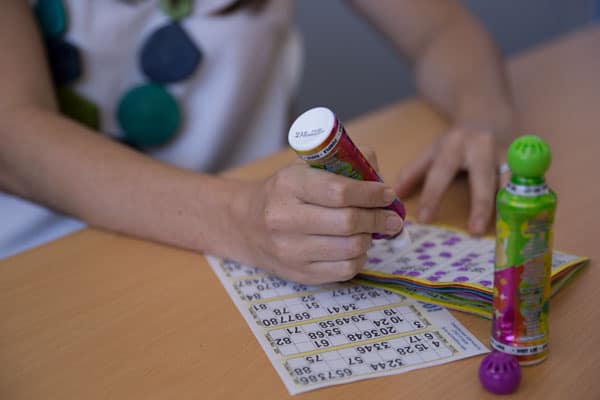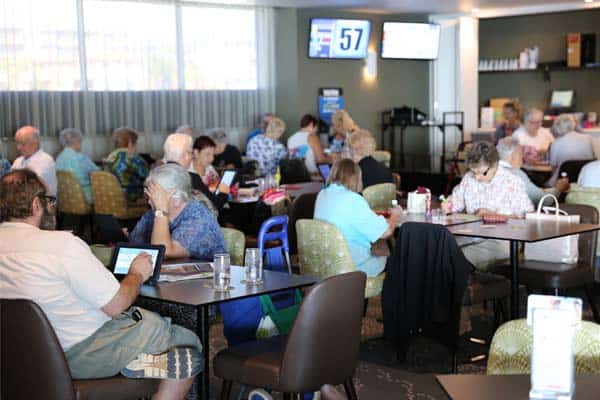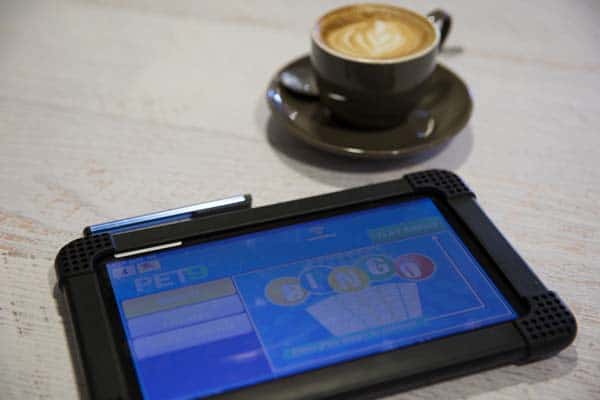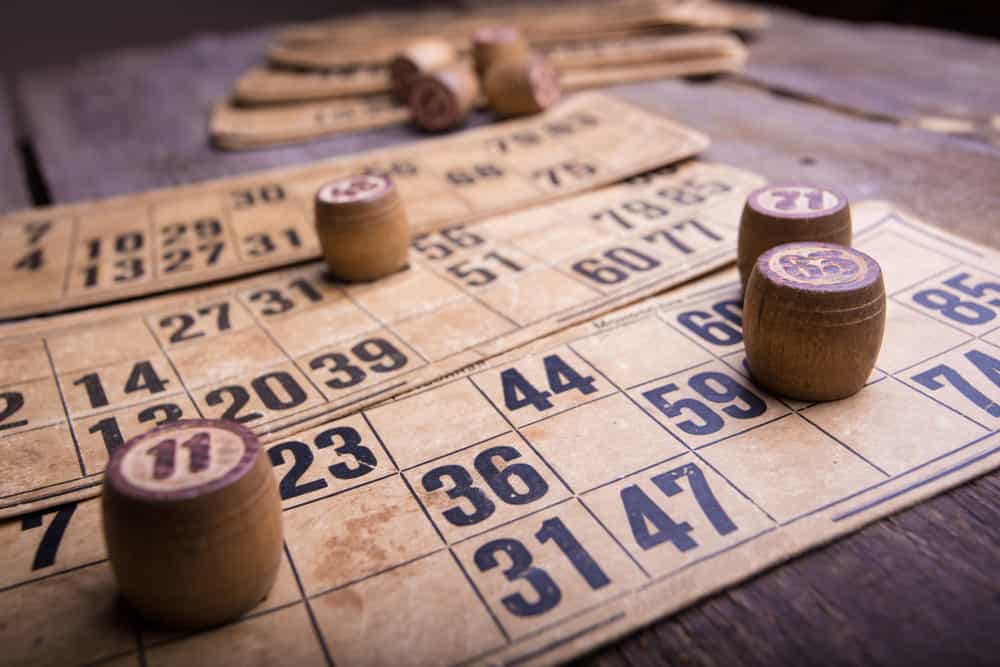There’s nothing like a simple game to ignite controversy among family and friends. From Monopoly and Scrabble right through to Snakes and Ladders and Bingo, everyone has their own interpretation of the rules and of what it takes to win. We can’t profess to be board game champions, but Bingo is something we know a thing or two about. So, to help you settle upon a set of rules that you can play by at home, The Westport Club has put together this set of Bingo instructions. We’ve also included a brief overview of the fascinating history of the game, and our super seven strategies for winning.
Starting from scratch, what is Bingo?
Players mark off numbers on tickets or cards in the game of Bingo, which is also known as Housie when cash is the prize. The game has its origins in 16th century Italy as a variation of Lo Giuoco del Lotto d’Italia, so the original set of Bingo instructions were probably written in Italian. This Lotto is still played on a national level each week, and it contributes over $75 million to the government coffers every year.
The Lotto became a game which spread throughout Europe, and a travelling carnival eventually brought the game to the United States of America, thinking it might be a good addition to their sideshows. They named it ‘Beano’ because players marked their cards with dried beans, and then shouted out ‘Beano’ when they marked off all the numbers on their card. An almost-destitute travelling toy salesman happened across the carnival, shortly after the big stock market crash of the 1920s. After watching people crowd around the booth, as though addicted, he was inspired to create a version of the game that could be played at home.

Bingo becomes a US success
This man’s name was Edwin S Lowe, and after his experience at the carnival he rushed off to make a prototype to test on his friends. His play-at-home version of the game inspired the same addictive tendencies, so he we pretty sure he was ‘on a winner’, so to speak. His Bingo instructions followed the game of Beano closely, but the name Bingo was decided upon when one of his friends became tounge-tied in her excitement over winning and yelled out the wrong word. Although Edwin was able to trademark the name ‘Bingo’, he could not trademark the game because of its history, so he was quickly copied with many variations of his play at home version.
Bingo gets commercialised
Edwin was contacted by a priest who had a problem, very soon after his Bingo game was launched. The priest had decided to raise money for the church by selling Bingo tickets, along with a member of his congregation. The priest had launched the scheme with several sets of Edwin’s game, and followed Edwin’s recommended Bingo instructions, but issues developed when each game played produced several winners. Edwin immediately realised the fund-raising potential of his wonderful game, but he also realised that to make the game work on a grander scale, many, many more combinations of numbers would have to be developed for the cards.
Enter the mathemeticians
Edwin also realised that the task of developing more combinations was completely beyond him, so he sought help from a maths professor. Edwin’s brief was to develop 6,000 Bingo cards with a unique set of numbers. Eventually the mammoth task was completed. More churches were saved, and word started to spread. Edwin began to get thousands of letters asking for help, so he published the very first Bingo Instructions Manual, and also started sending out a monthly newsletter to 37,000 subscribers! By 1934, around 10,000 games of Bingo were being played in the USA each week and Edwin’s company grew to a thousand employees who were frantically busy. Destitute no longer, his 64 printing presses were operational 24 hours a day, and they used more newsprint than the New York Times.
How Bingo is played today
There are certainly variations in the way Bingo is played at public venues these days, and each venue will have their own set of Bingo instructions to share with their players. For a start, there are two main card formats. Some venues play with cards that have five columns and five rows of numbers, which is 25 numbers in total. The first column contains five random numbers that fall between 1 and 15. The second column contains numbers between 16 and 30, the third 31 – 45, and so on, up to 75. There is also sometimes a square marked ‘free space’.
The classic card format (more like the original games of Lotto and Beano) is divided into three rows and nine columns. Each horizontal row has five numbered and four blank squares, arranged randomly. The vertical columns held numbers from 1 to 10 in the first, 11 to 20 in the second, and so on, up to 90. This is the card format we use at The Westport Club.
Bingo instructions for special pattern games
Some Bingo venues play only ‘blackout’ Bingo, where all numbers on the card have to be crossed off – this is how we play at The Westport Club. Other venues who play 5 row x 5 column Bingo cards sometimes play special pattern games such as a ‘Race-Track’ as they work toward the goal of filling the whole sheet. This makes the Bingo instructions slightly more complex to follow. In these games, you might need to be first to call five in a row, or you might need to mark only the numbers in the corners, or you need to mark the numbers in a cross on your card, all while you continue on your mission to score a ‘blackout’.
Bingo lingo
Although you’ll still find venues using a rotating wire basket with a winder that mixes the balls, this is becoming less and less common as technology takes hold, and computerised systems are used to generate the numbers randomly. Something that is still fairly consistent is that a caller is employed to announce the rules and relevant Bingo instructions. They call the numbers that are drawn, and provide a little bit of patter and entertainment while they’re doing so. A quirky Bingo tradition is still followed in some venues. The callers clarify the numbers called with a little rhyme or visual reference. The players cry out a response to some of these sayings, just for fun. This practise had its origins in Britain and was started because the crowds that were drawn to games were often enormous and the callers struggled to be heard right across the Bingo hall.
Popular examples of these are:
3: A cup of tea
22: Two little ducks
11: Legs eleven (to which the audience responds with a wolf whistle)
13: Unlucky for some
66: Clickety Click
71: Bang on the drum (to which the audience responds with a thump on the table)
88: Two fat ladies

Playing Bingo at home
Bingo can be played anywhere at any time, from your home to somewhere like here at The Westport Club. Bingo at home is a great game for grandparents to play with children from around the ages of six or seven. It teaches them number recognition, grouping numbers in tens and how to be methodical in their approach to a task. To play, you need to keep the Bingo instructions and equipment simple. A bag of numbered balls for the caller to draw, and some reusable laminated number cards and whiteboard markers (so that the numbers can be marked off as they’re drawn and erased later) will all suffice, and lots of fun will be had by all.
Bingo is also a game for grown-ups, and an extra level of interest (and competitiveness) is added when prizes are at stake. This is also where a level of strategy is added to Bingo.
Bingo instructions for the best chance of winning
A lot of people will argue that there’s no chance of influencing the outcome of a Bingo game, because the draw is completely random and it’s up to the players to listen and mark off their numbers as they go. Mathematically speaking, this is the truth, but there are definitely some smart strategies that you can employ to give yourself the best chance of winning, no matter what rules or Bingo instructions the venue is playing by.
Here are seven super strategies for bringing your ‘A’ game to the Bingo hall.
- Make sure that you only try and manage as many games as you feel comfortable with. If you’re trying to watch too many cards, then it’s highly likely that you’ll miss numbers as they’re called. You’re also going to struggle to lay them all out on the table in front of you.
- A tip for beginners: To help you locate numbers quickly, write the number bands for each column of numbers at the top of each page of your book of cards. For example, if you’re playing a three by nine card, write 1-10 above the first column, 11 – 20 above the second column, etc. That way, if the caller calls 15, you’ll know straight away to look in the second column.
- It’s worthwhile to learn all of the Bingo lingo. This way, if you’re not sure of the number called, you’ll still have a good chance of marking it off your card because you recognise the caller’s rhyme or saying.
- Bring the right supplies. Bingo dabbers help you mark numbers quickly, because you just place a simple dot instead of having to draw a circle or a cross. A small bit of masking tape will help you to secure your cards to the table so they don’t get all messed up.
- If you’re playing a ‘special pattern’ game, trace a line over the winning pattern on your card with a highlighter. This will make it more obvious when you’ve won.
- Take note of the numbers that are called by writing them down on paper, so that if you have a spare fraction of a second, you can glance over your cards and see any numbers that you may have missed.
- Keep the conversation to a minimum during game play. Bingo is a great opportunity to socialise, but if you miss a number that’s called, and it appears in one of the games on your cards, it’s just not possible to win on that game.

Bingo at The Westport Club
Here at The Westport Club, we’ve just revamped Bingo. Starting Tuesday 10th April and continuing every Tuesday and Wednesday from 9am, we will commence the morning with a Club Bingo session. After the break, it’s time to play Cash Housie. Our new Bingo sessions are the perfect way to kick off a catch up, so bring your friends for a relaxing and social morning out. You can stay on for a casual lunch at Hastings Coffee Co. or Aqua Restaurant, or get the girls together for a coffee!
There are also prizes and benefits galore! You can win Westport Rewards Points at Club Bingo sessions. After the bingo session, you can win cash prizes with Cash Housie. The points will be loaded straight on to your membership card for your convenience. You can spend your Reward Points on food, beverage, Rewards Shop purchases and gift cards!
To make it even easier to play, we now have portable electronic bingo units (PETs) available for hire.
Supporting the Heart Research Institute
Quite arguably the best part of our new Bingo sessions (and something we are very proud of) is that all the proceeds support the Heart Research Institute. The mission of the Heart Research Institute is to prevent death and suffering from heart disease. Funds raised are directed towards scientific research that will make a difference to the understanding of heart disease.
Come and join us for Bingo soon – we guarantee a great fun morning, and don’t forget your new strategies for play.

